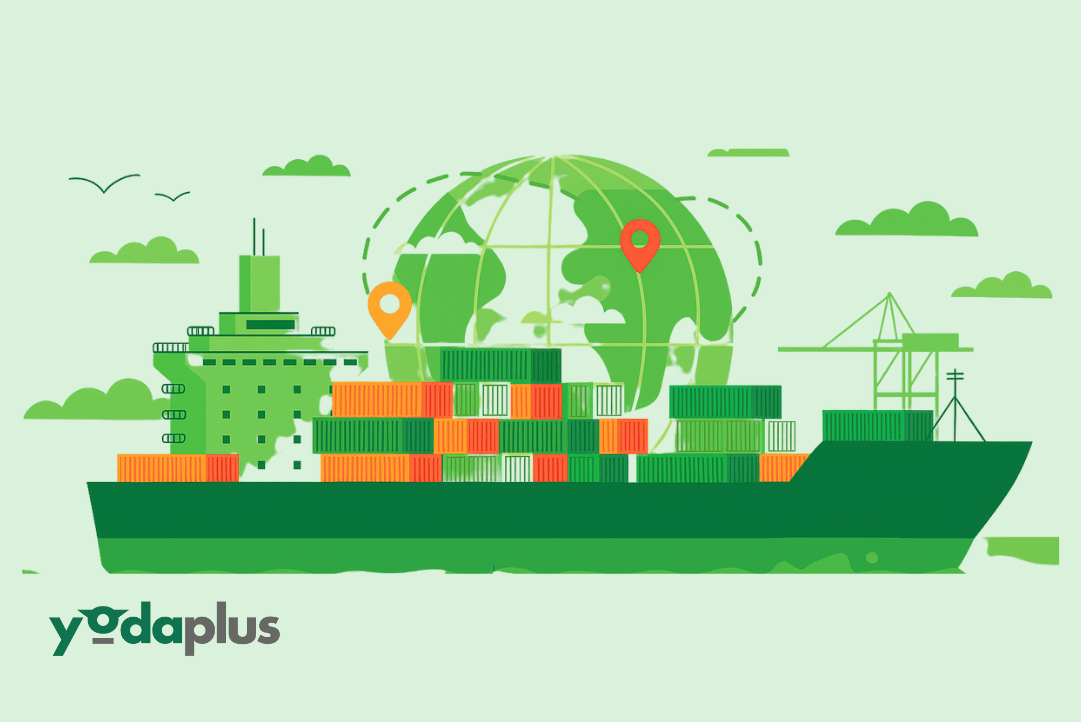
What Is SOLAS and Why Do Ship Crews Need to Know About It?
August 7, 2025 By Yodaplus
Safety at sea is non-negotiable. Whether it’s a cargo vessel or a passenger cruise ship, the risk of fire, collision, or mechanical failure is always present. This is why the International Maritime Organization (IMO) developed one of the most important safety frameworks in shipping: SOLAS.
But what exactly is SOLAS, and why should ship crews care about it? This blog answers that question and shows how SOLAS ties into broader maritime compliance, crew safety, and documentation efforts.
What Is SOLAS?
SOLAS stands for the International Convention for the Safety of Life at Sea. It was first adopted in 1914 after the tragic sinking of the Titanic, but the current version was introduced in 1974 and is regularly updated.
The goal of SOLAS is simple: to set minimum safety standards in the construction, equipment, and operation of merchant ships. Today, more than 160 countries are party to the SOLAS Convention, making it a global benchmark in shipping compliance.
Why Is SOLAS Important for Ship Crews?
SOLAS isn’t just a checklist for companies, it directly impacts the daily life of crew members.
Here’s how:
- Training and Awareness
Crew members must be trained in emergency procedures outlined by SOLAS. This includes Fire Control Plans, lifeboat drills, and ship documents like the muster list. - Emergency Readiness
If a fire breaks out or a system fails, the crew’s knowledge of SOLAS protocols can mean the difference between safety and disaster. - Responsibility and Accountability
Port State Control inspectors routinely check compliance with SOLAS. If documents are missing or procedures aren’t followed, the vessel could be detained — and crew may face penalties.
SOLAS and Maritime Documentation
A big part of SOLAS compliance is maintaining up-to-date maritime documentation. Every ship must carry a wide range of shipping documents, including:
- The Fire Control Plan
- Cargo safety declarations
- Proof of ISM Code compliance
- STCW certificates for crew qualifications
Many of these are required not only for SIRE vetting or flag inspections but also to meet maritime regulations during routine operations.
This is where document intelligence tools come into play. By digitizing and organizing shipping documentation, crews can quickly access required materials during audits, drills, or emergencies.
SOLAS Chapters You Should Know
SOLAS is divided into chapters, each covering a specific area of ship safety. The most relevant ones for crews include:
- Chapter II-2: Fire protection and extinguishing systems
- Chapter III: Life-saving appliances and arrangements
- Chapter V: Safety of navigation (includes COLREGs and bridge equipment)
- Chapter IX: Safety management under the ISM Code
- Chapter XI-2: Ship and port facility security under the ISPS Code
These chapters are reflected in shipboard operations through drills, ship documents, and safety routines.
SOLAS, Environmental Rules, and the Bigger Picture
SOLAS does not directly address environmental issues, but it complements maritime environmental compliance initiatives like MARPOL. Together, these conventions ensure that ships are not only safe for the crew but also responsible stewards of the ocean.
A ship that meets SOLAS standards is more likely to also meet other IMO rules, like Ballast Water Management, ISGOTT (for tankers), and pollution prevention protocols.
Why Digital Access to SOLAS Matters
One challenge crews face is navigating all the rules and understanding how they apply. This is especially true when working with physical ship documents, which may be scattered, outdated, or difficult to locate during inspections.
Solutions like OceanDocs by Yodaplus help by turning shipping documents into searchable, smart documents. This means the Fire Control Plan, ISM Code procedures, or COLREGs references are always at your fingertips. For crews, this can reduce inspection stress and improve vessel safety response times.
How Non-Compliance Can Hurt Your Operations
Failing to comply with SOLAS affects more than the vessel’s paperwork — it can result in:
- Detention at port by Port State Control
- Fines or delays due to incomplete shipping documentation
- Increased insurance premiums
- Damage to reputation (especially in SIRE Vetting results)
Worse, in an actual emergency, non-compliance can lead to real harm, something no shipping company or crew wants.
Tips for Crews: How to Stay Compliant
- Understand the Requirements
Learn which parts of SOLAS apply to your role, especially around firefighting, evacuation, and communication. - Keep Documents Updated
Ensure all maritime documentation is current, accessible, and organized. - Practice Drills Seriously
Treat drills like real emergencies. They are not just formality, they’re preparation. - Use Smart Tools
Leverage document intelligence platforms like OceanDocs to stay inspection-ready. - Report Gaps Immediately
If equipment is not working or shipping documents are missing, escalate the issue. Your safety depends on it.
Final Thoughts
For crews, SOLAS is more than a rulebook, it is a way of working. It influences how you respond to danger, how you prepare for inspections, and how you maintain vessel safety every single day.
When combined with updated shipping documents, smart tools like OceanDocs by Yodaplus, and regular training, SOLAS becomes second nature, not just another regulation to remember.
In the world of shipping, maritime compliance is not just about ticking boxes. It is about protecting lives, safeguarding the environment, and keeping vessels operating efficiently and safely.
So the next time you flip through your Fire Control Plan or participate in a safety drill, remember: You’re practicing SOLAS, and you’re helping the entire maritime industry stay afloat.